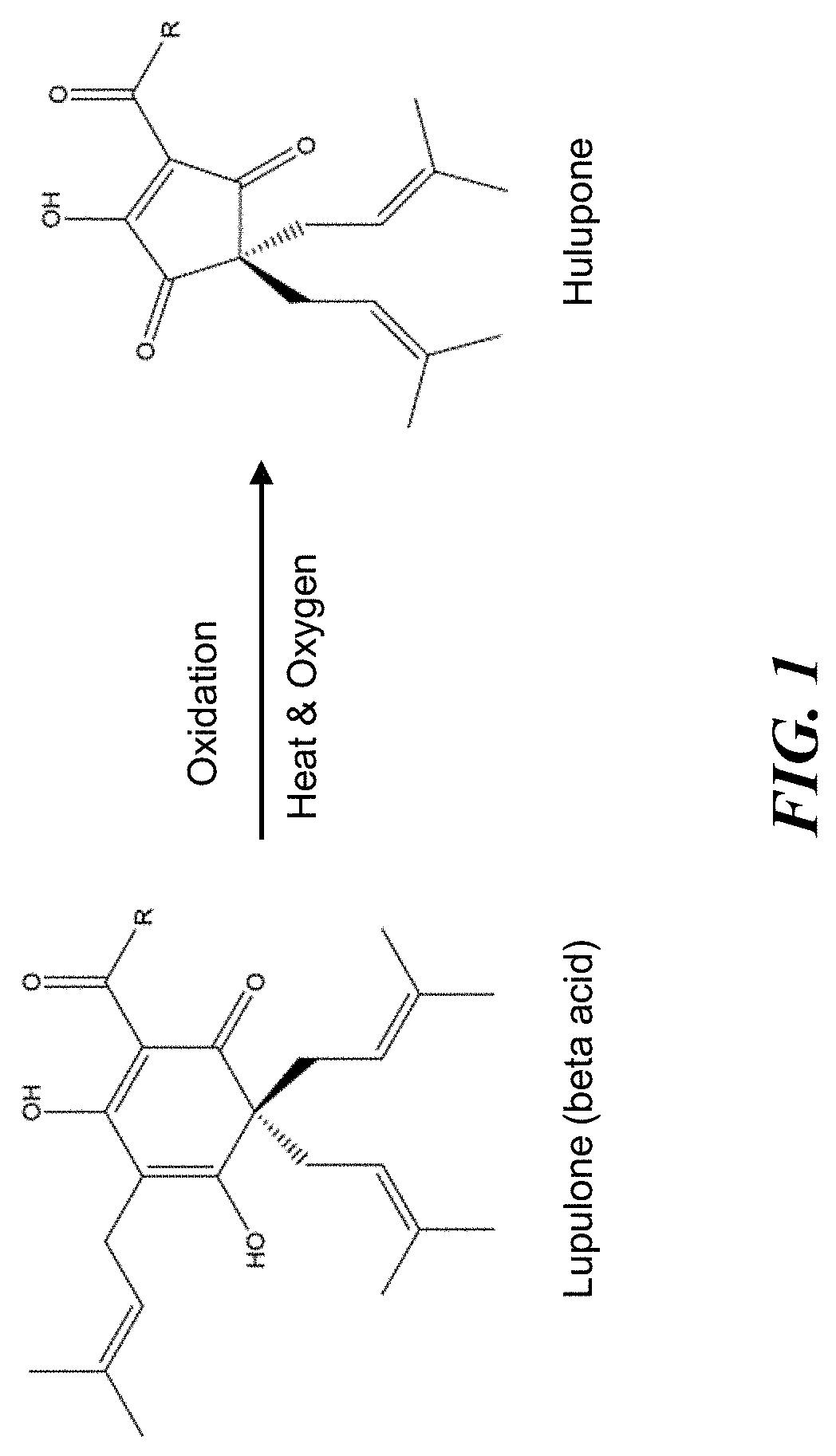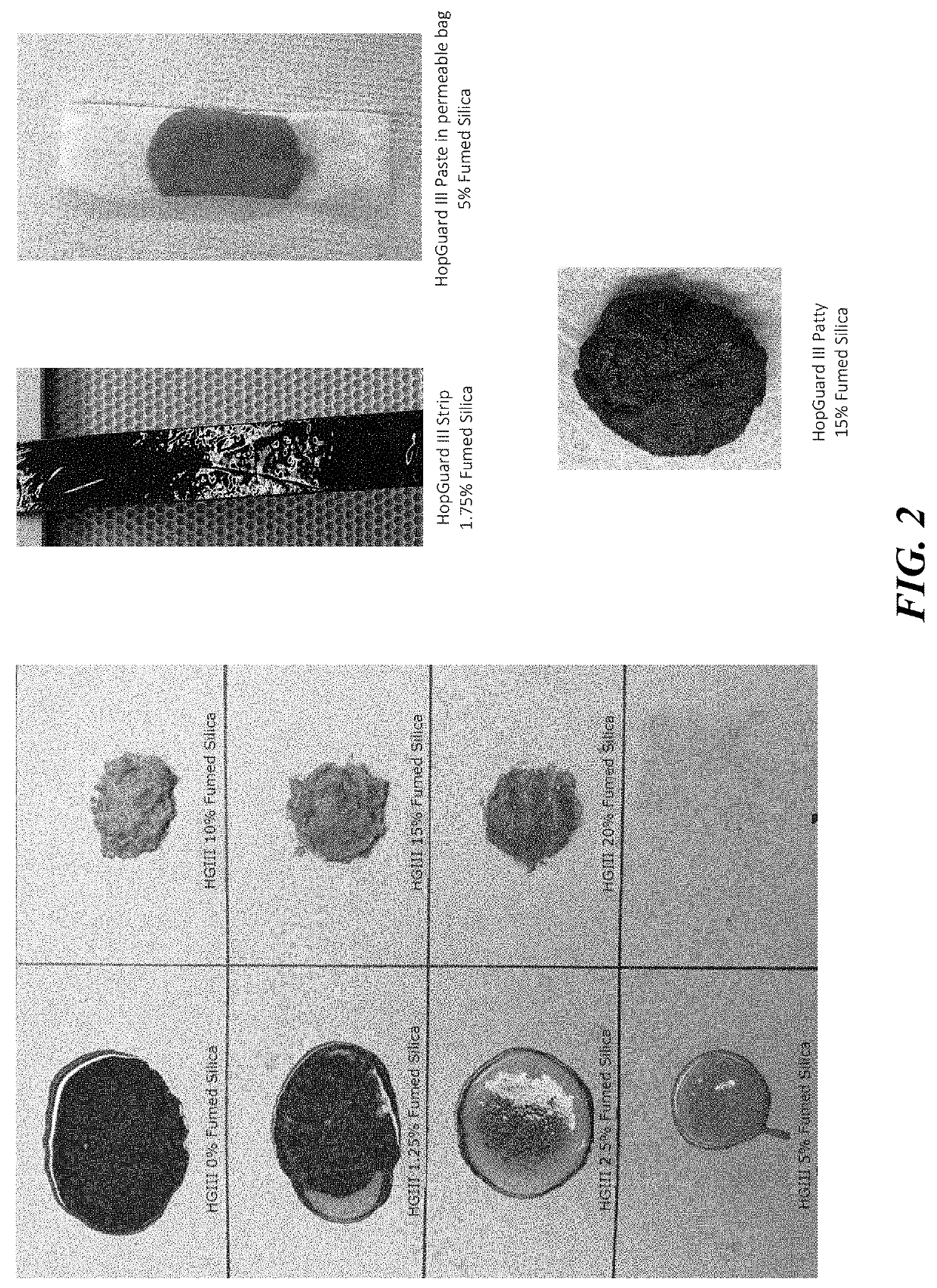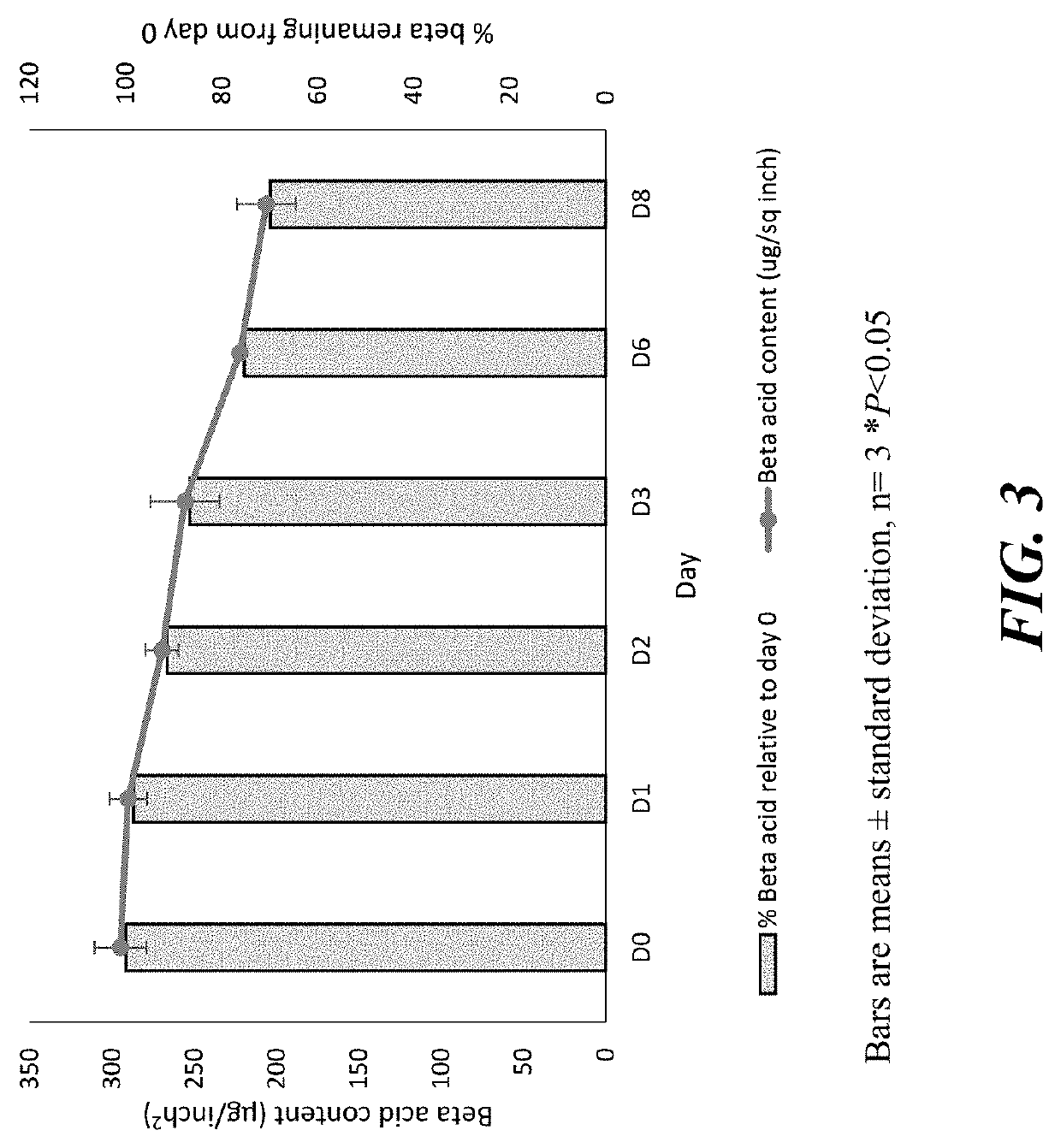Compositions and methods for controlling a honey bee parasitic mite infestation
a technology of honey bees and colonies, applied in the field of compositions and methods for controlling honey bee parasitic mite infestation, can solve the problems of oxidation greater oxygen exposure being detrimental to the effectiveness and/or duration of hopguard strips, etc., and achieves the effects of reducing the risk of infection, and increasing the oxidative degradation rate of beta acids
- Summary
- Abstract
- Description
- Claims
- Application Information
AI Technical Summary
Benefits of technology
Problems solved by technology
Method used
Image
Examples
example 1
Development of HopGuard® Formulations and Testing Protocol
[0018]Five Hop formulations and one control formulation with zero hop beta acid were developed at Haas Innovations Center, John I Haas, Inc., Yakima, Wash. TABLE. 1 is a table showing the composition of various HopGuard® formulations
TABLE 1Hop BetaPropylenePolysor-FumedAscorbicS.Acid ResinsGlycolbate 60Silicaacidno.Product(%)(%)(%)(%)(%)1HopGuard33333300II2HopGuard33283305II + 5%Ascorbicacid3HopGuard331055.251.750III / HopGuardIII Strip4HopGuard33105250III Paste5HopGuard331042150III Patty6Control0505000
[0019]In one embodiment, natural antioxidant ascorbic acid was used at the rate of 5% in the formulation while reducing the propylene glycol content to develop HopGuard® II+5% ascorbic acid strips. Other natural antioxidants such as, for example, vitamin A, tocopherols, carotenoids, lutein, lycopene, polyphenols like flavonoids or synthetic antioxidants such as propyl gallate, tertiary butylhydroquinone, butylated hydroxyanisole,...
example 2
Inclusion of Antioxidant / s in the HopGuard® Formula Decreases Oxidative Degradation of Hop Beta Acid
[0025]In a preliminary experiment, our currently available product, HopGuard® II, was found to have 30% beta acid degradation over a period of 8 days under simulated hive conditions as described above (FIG. 3). When tested in lab, using protocol described in example 1, the HopGuard® II+5% Ascorbic acid strips were found to have no beta acid degradation (p<0.05) over a period of 7 days, where 35% degradation of beta acid was observed in the HopGuard® II product (FIG. 4). When tested in beehives, the HopGuard® II+5% Ascorbic acid strips were found to have relatively lower beta acid degradation (44% degradation) when compared with HopGuard® II product (75% degradation) over a period of 14 days (FIG. 5).
example 3
Addition of Excipient Fumed Silica Prolongs Availability of Product from HopGuard® Strips and Retards Oxidative Degradation of Beta Acids
[0026]Two strip based products, HopGuard® II and HopGuard® III were tested for change in strip weight and beta acid degradation under simulated hive conditions over a period of 14 days using protocol described in Example 1. Strip weight and wetness were used as an indicator of the availability of product for bee uptake. Fumed silica in HopGuard® III strip prevented the reduction of strip weight via evaporative drying or drip loss, while keeping the strip wet on touch (observation), thereby enabling the strip to last longer (FIG. 6). On the other hand, HopGuard® II strips were completely dry (observation) and had a relatively greater change in weight over a period of 14 days. When tested for beta acid content, HopGuard® II strips had higher degradation of beta acid (41%) compared to HopGuard® III strips (30%) after 30 days (FIG. 7).
[0027]The strips ...
PUM
 Login to View More
Login to View More Abstract
Description
Claims
Application Information
 Login to View More
Login to View More - R&D
- Intellectual Property
- Life Sciences
- Materials
- Tech Scout
- Unparalleled Data Quality
- Higher Quality Content
- 60% Fewer Hallucinations
Browse by: Latest US Patents, China's latest patents, Technical Efficacy Thesaurus, Application Domain, Technology Topic, Popular Technical Reports.
© 2025 PatSnap. All rights reserved.Legal|Privacy policy|Modern Slavery Act Transparency Statement|Sitemap|About US| Contact US: help@patsnap.com



